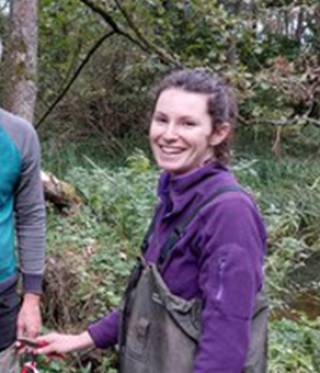Research Title
Bringing back the burbot via hydrological rewilding
- More about Reagan
- PG Cert. Conservation – University College London
- BSc Geography – King’s College London
Past Projects
- “Do-it-yourself”: evaluating the potential of Arduino technology in monitoring water quality (BSc Dissertation)
- Publications
- Pearce, R.H., Chadwick, M.A. and Francis, R., 2022. Experiential learning in physical geography using arduino low-cost environmental sensors. Journal of Geography in Higher Education, pp.1-20.
- Chan, K., Schillereff, D.N., Baas, A.C., Chadwick, M.A., Main, B., Mulligan, M., O’Shea, F.T., Pearce, R., Smith, T.E., Van Soesbergen, A. and Tebbs, E., 2021. Low-cost electronic sensors for environmental research: pitfalls and opportunities. Progress in Physical Geography: Earth and Environment, 45(3), pp.305-338.
- Research Interests
The burbot (Lota lota) is a freshwater cod that was generally accepted to have gone extinct in the UK in the early 1970s due to river modification and pollution. The burbot requires good water quality and a mixture of slow flowing, deep water, backchannel, and floodplain habitat. Essentially, a laterally and longitudinally connected, complex river system.
This kind of river habitat would not only have the benefit of supporting burbot, but would support a wider diversity of taxa (i.e., macroinvertebrates, macrophytes, fish) as this connectivity will produce a more heterogenous aquatic ecosystem. The project aims to assess whether the River Wissey, Norfolk, UK is suitable for a potential future reintroduction of the burbot and if not, analyse how best the river can be restored to support a wider diversity of aquatic species, including the burbot.
Specifically, the research will seek to establish baseline ecological, hydrological, hydro-chemical, and climatological data in order to launch a successful reintroduction scheme and assess whether the burbot could survive in this system or what could be improved.
Methodology
The methodologies can be divided into four components: ecology, water chemistry, hydrology, and river habitat. The river hydrology will be studied using hydrological modelling and water-level data collection to understand temporal and spatial variations in floodplain inundation.
As well as for water level, low-cost, opensource environmental sensors will be established in a local monitoring network for temperature to understand the temporal and spatial variations in thermal regime, to validate the habitat’s suitability. Walkover surveys will also be used to map meso- and microhabitats in the river system.
Finally, fish surveys will be undertaken using electric fishing, fyke netting, and eDNA sampling to determine, to a high accuracy, the existing fish population and how the burbot would interact with the existing ecology.
Impact
The results will provide a comprehensive study of the potential reintroduction site, key for the success of any species reintroduction, and to help prioritise future restoration activities. The methods themselves will validate suitable means for post-reintroduction monitoring of a burbot population, while the practice of using a beneficial, lost species to guide river conservation will add to the published evidence of the benefits of nature-led conservation strategies.
Moreover, the project will help to solidify relations with local stakeholder groups by disseminating information, which will benefit a possible reintroduction at some point in the future.
- Research Funding
- London NERC Doctoral Training Partnership (Cohort 7)
- CASE partnership with Norfolk Rivers Trust
 Close
Close


